Although the name may sound a bit ominous, the Devil’s Backbone Plant is a truly pleasant plant to include in your indoor garden.
This guide will show you how to grow the unique devil’s backbone and how to care for it.
Devil’s Backbone Plant Overview
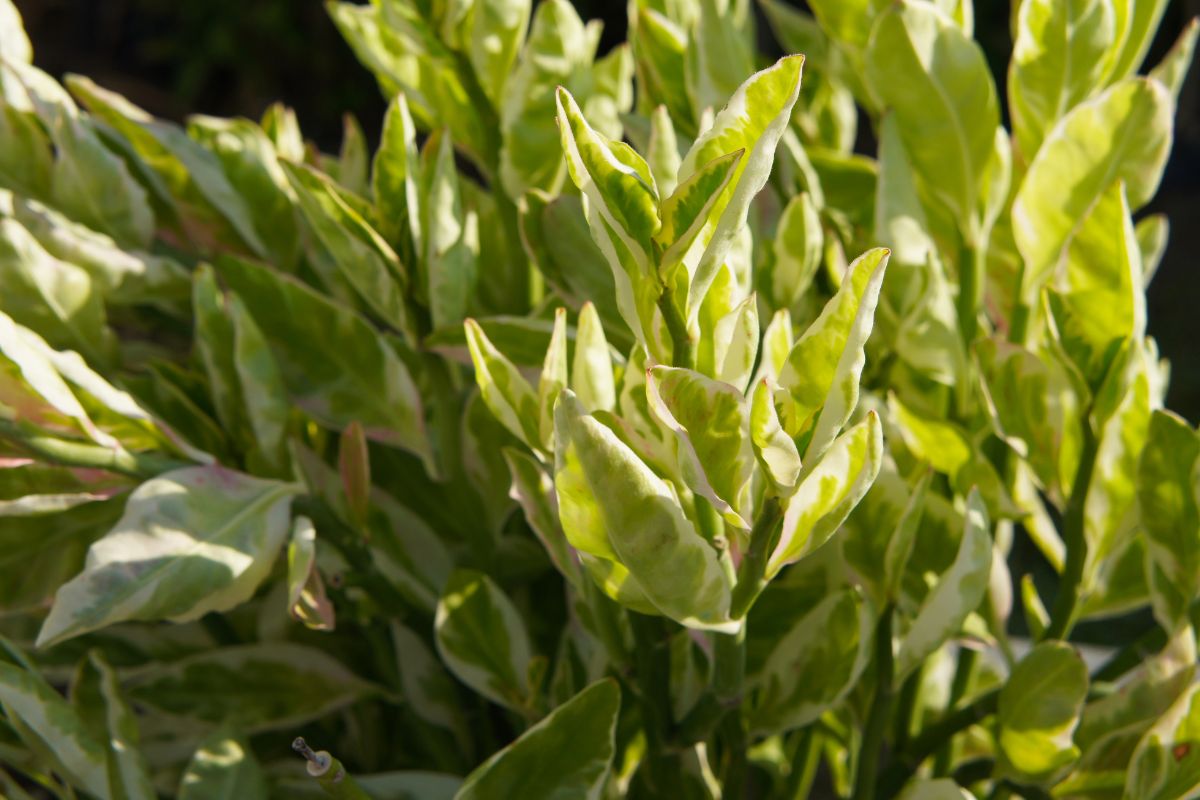
The devil’s backbone is an easy-care, low-maintenance tropical plant to grow and nurture. This is a striking plant that grows straight upward and will brighten up any corner that can do with some vertical décor.
It has a number of other common names, including:
- ZigZag Plant
- Red Bird Flower
- Persian Lady Slipper
- Jacob’s Ladder
- Japanese Poinsettia
- Fiddle Flower
- Christmas Candle
As a tropical succulent, this species can be found across the Americas from Brazil to Mexico to warmer zones in North America. It enjoys the subtropical regions of North and Central America.
It was initially found by Carl Linnaeus as far back as 1753 and named the Euphorbia tithymaloides. The actual botanical name of Pedilanthus tithymaloides was used in 1812 by Pierre-Antoine Poiteau because the blooms appear to be shaped like shoes.
A member of the Crassulaceae family, it will grow just above three feet tall and a foot wide.
However, don’t expect rapid growth, as the devil’s backbone only grows two to three inches each growth season. So, plan on your plant reaching its maximum height somewhere between five and eight years.
Devil’s Backbone Plant Care Guide
This plant can be cultivated outdoors in USDA hardy zones 9, 10, and 11 during the summer in a shaded spot with temperatures measuring above 55°Fahrenheit.
The devil’s backbone may actually have more success when grown indoors. Sun scorching and dehydration are risks for this plant when placed in direct sunlight. These plants should be kept away from heating and air conditioning units and vents.
Growing Medium for the Devil’s Backbone Plant
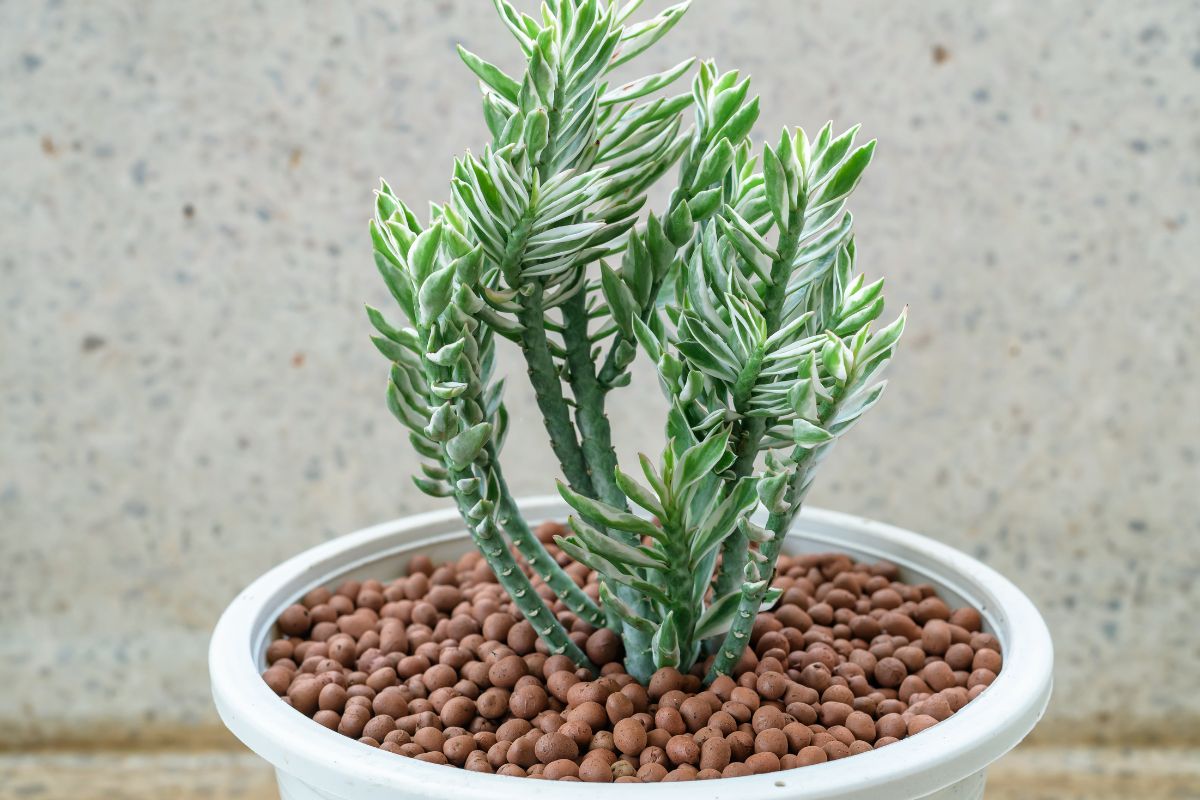
Ideally, the growing medium should be a cactus and succulent potting mix. It likes well-draining, moist soil mix.
If you don’t have any and want to use a regular potting mix, this is fine as long as you add peat moss or vermiculite with some sand to ensure adequate drainage.
Terracotta pots are great for helping reduce excess moisture as they are porous and tend to sweat.
Light for the Devil’s Backbone Plant
Bright indirect sunlight is the preferred lighting for this plant, so putting it near a window is optimal.
But be careful putting it in direct exposure to sunlight because that can lead to leaves scorching.
Water for the Devil’s Backbone Plant
The top half of the soil bed should be allowed to dry out before watering. Better you should underwater your devil’s backbone than overwater.
Underwatering will be evident if the foliage turns yellow or grayish, and there is no new growth.
Overwatering will also show its symptoms with yellowing lower foliage, little growth, and root or stem rot.
This is a plant that can be watered with success from the bottom. You can do that by placing the pot in a saucer of water for ten to fifteen minutes and allowing the plant to soak up what it needs.
Remove the pot from the water and allow the pot to drain. Then return it to its plant holder or location.
Average home humidity is more than adequate for the devil’s backbone’s needs.
Fertilizer for the Devil’s Backbone Plant
While a basic houseplant fertilizer can do the job, a cactus fertilizer is more appropriate as these fertilizers will address the specific nutrient needs of these plants.
You can feed your devil’s backbone plant every month during its growing season. Cut this back to every six weeks in the fall and winter months.
Pruning and Potting the Devil’s Backbone Plant
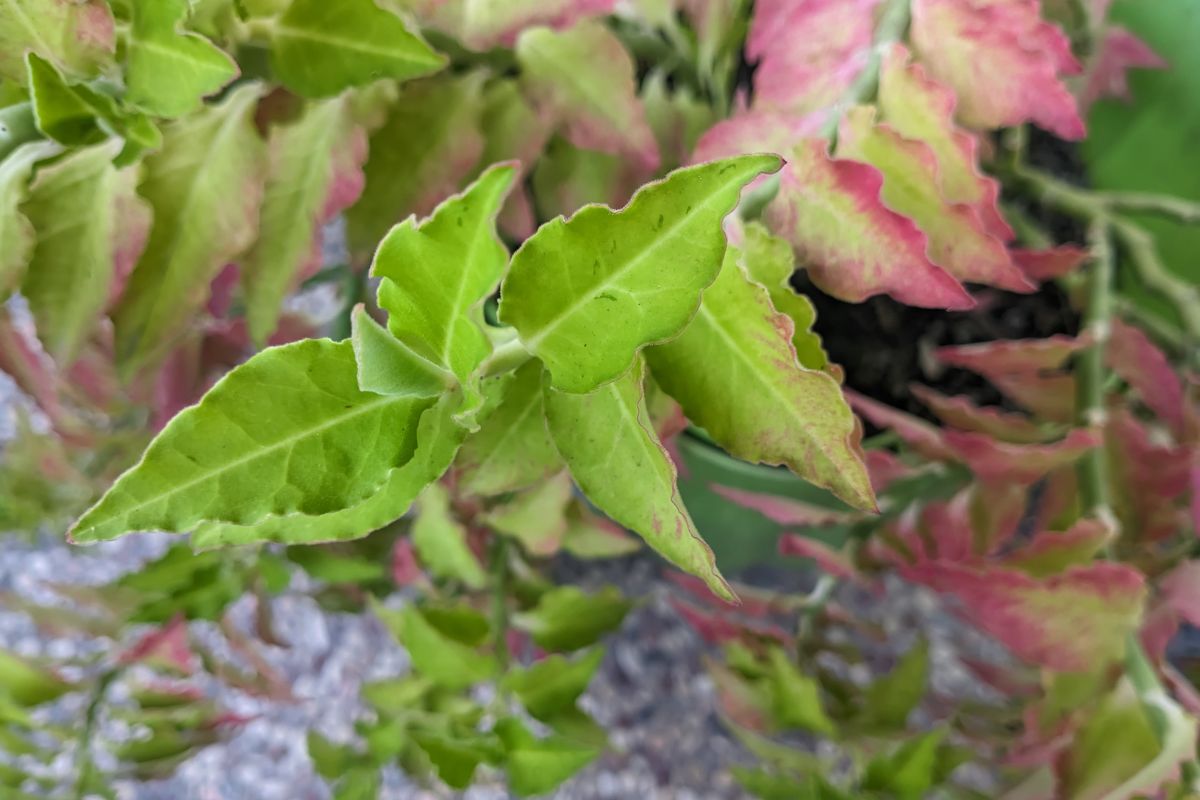
Pruning is important for removing dying or yellowing foliage. Always use clean garden shears to reduce the chance of transmitting fungal or bacterial infections among plants. Cut cleanly when pruning to avoid creating wound damage to the stem.
- Related article on garden shears and other gardening tools.
Repotting will be necessary about every third year. Ideally, a cactus or succulent potting mix should be used. Select a pot that is one size larger with drainage holes for good draining.
Because they are susceptible to root rot, letting them become a bit rootbound will actually protect the plant and increase the possibility of flowering.
Make sure to hydrate your plant well at least 24 hours before repotting to help prevent shock.
For those repotting in locations with lower light conditions, make sure to add a good dose of perlite to the bottom of the container to help with drainage, so the bottom won’t become soggy.
Propagating the Devil’s Backbone Plant
The devil’s backbone can be propagated through seeds or stem cuttings.
To propagate with stem cuttings:
- Select the best branches from leading or principal stems.
- Cut a length of approximately five inches between two leaves.
- Remove the lower foliage from your cutting.
- Place the cutting on moist paper toweling for a couple of days before placing the cut end in the growing medium. This will allow the cut wound to create a scab or callous before being planted.
- Place the stem cutting in a cactus or succulent potting mix with good drainage. The remaining foliage should remain above the soil bed.
- The bottom leaf nodes where you removed foliage should be inside the soil bed.
- Avoid direct sunlight, opting for bright indirect light.
- Keep your soil bed moist, but not soggy.
- After approximately three months, your new plant will have matured sufficiently to be treated as an established houseplant.
Devil’s Backbone Plant Flower Blooms and Foliage
Between the spring and summer, this plant will produce inflorescences that are beak-shaped and purple. Normally, however, this plant will not bloom when cultivated indoors.
Devil’s Backbone Plant Pests, Disease, and Problems
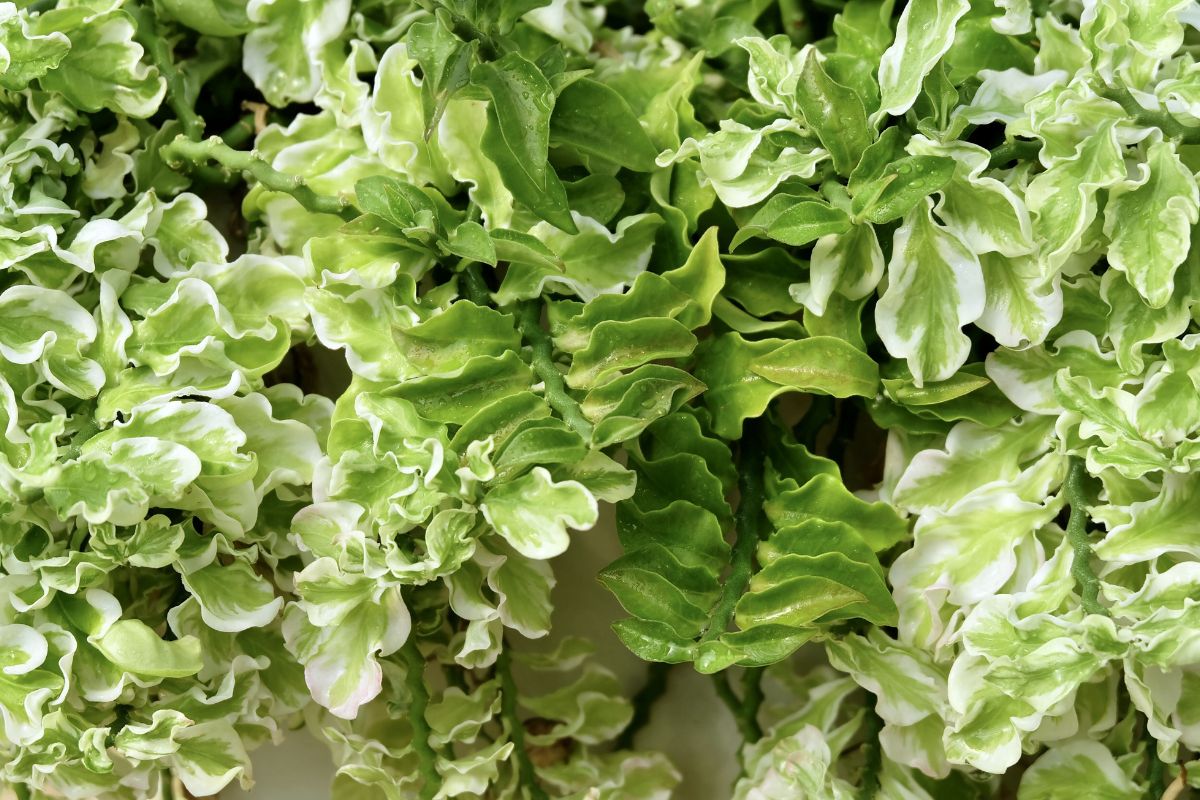
Mealybugs, scale insects, whiteflies, thrips, and root mealybugs will all be inclined to visit your plant if given the opportunity. Be on the lookout for indications that these pests have taken up residence and intervene immediately by removing pests manually followed by an insecticidal soap or neem oil.
Diseases that are common to the devil’s backbone include root rot, leaf spot disease, powdery mildew, and botrytis.
Excessive exposure to direct sunlight will have leaves turning brown with crispy edges, stunted growth, or perhaps even sunken leaves. If you notice any of these symptoms, gradually reduce exposure to sunlight.
It is important to avoid environmental shock, which happens when you abruptly change one growing environment for another that is totally different.
Too little access to light will contribute to problems with overwatering.
Devil’s Backbone Plant Toxicity and Pets
Classified as a poisonous plant by the ASPCA, it can cause nausea, vomiting, diarrhea, and a total loss of appetite.
The devil’s backbone is a poisonous plant that contains a cardiac glycosides toxin called bufadienolides. Cardiac glycosides is actually prescribed to dogs with heart issues, but when this it’s given to or ingested by healthy dogs, it can lead to toxicity and possible death.
If you suspect your pet has ingested any part of the plant, contact your veterinarian or local poison control center immediately.
Devil’s Backbone Plant Care Final Thoughts
All in all, the devil’s backbone is a beautiful plant that deserves more attention than it gets today. It would make a great addition to anyone’s home garden.
It is a beautiful flowering plant that grows well in pots and containers and requires moderate care and attention throughout its life cycle.
This plant does require some maintenance during the first year after planting, so don’t expect instant results.
Here are other great houseplants that you can grow at home or the office:
Devil’s Backbone Plant FAQs
What is the Devil’s Backbone plant good for?
The devil’s backbone plant is good for indoor gardening because it produces flowers and blooms beautifully. This plant also makes a nice cut flower. The stems of this plant grow from 6 inches tall to 2 feet long.
Can you grow the Devil’s Backbone outside?
Yes, the devil’s backbone will grow outside provided there is adequate sun and water. However, they do best in bright indirect light, so be sure to give it partial shade. They prefer well-draining soil too.
How do you care for a Devil’s Backbone plant?
Care for a devil’s backbone plant by keeping them watered regularly. Water deeply once every week until new roots begin to form. Then water less frequently. Keep the soil moist at all times. You may need to fertilize occasionally, depending upon how much fertilizer you use. Use a balanced organic fertilizer, but do not over feed.
Is the Devil’s Backbone plant poisonous?
Yes, the devil’s backbone plant is poisonous if eaten. Do not allow pets to eat parts of the plant. Contact your vet right away if you think your dog ate something toxic.
Why is my Devil’s Backbone dying?
Your devil’s backbone could be dying due to several reasons: lack of nutrients, poor drainage, overwatering, improper watering methods, disease, insect infestation, or other factors. Go through the various potential issues one by one to determine the cause.
Sources:
- https://planthardiness.ars.usda.gov/
- https://plantdiseasehandbook.tamu.edu/problems-treatments/problems-affecting-multiple-crops/stem-and-root-rot/
- https://www.aspca.org/pet-care/animal-poison-control/toxic-and-non-toxic-plants/devils-backbone

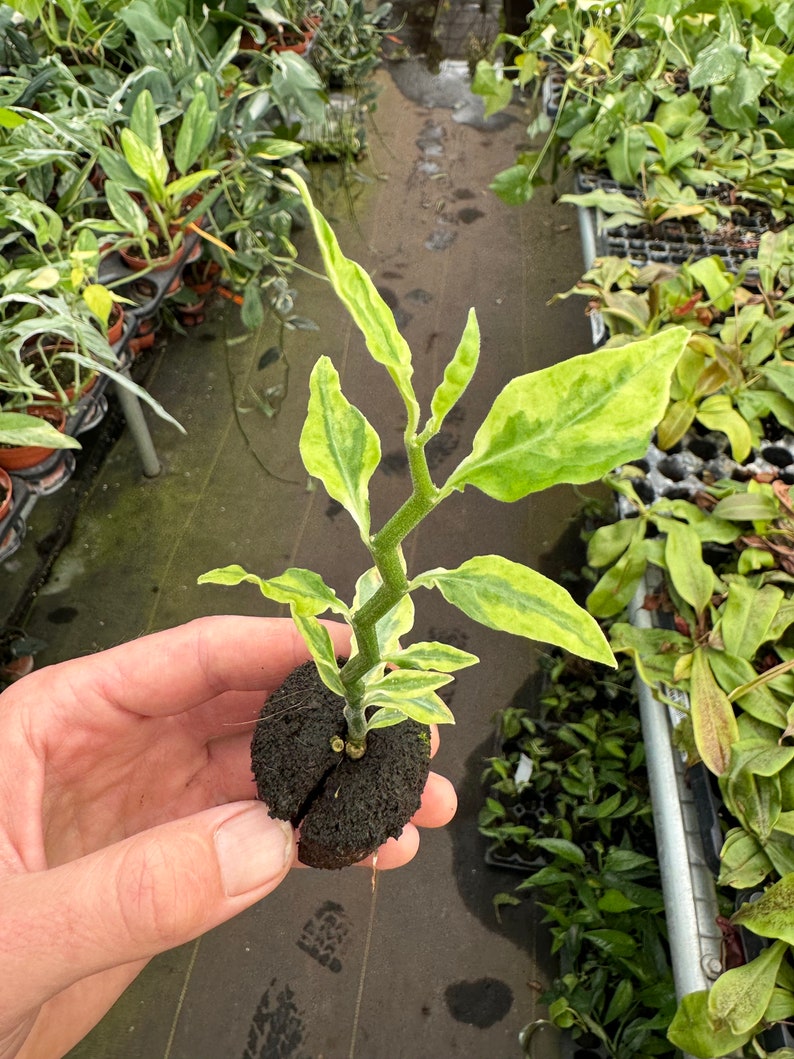

Ii have a Devils backbone. A new shoot and leaf is totally white. Is this unusual?